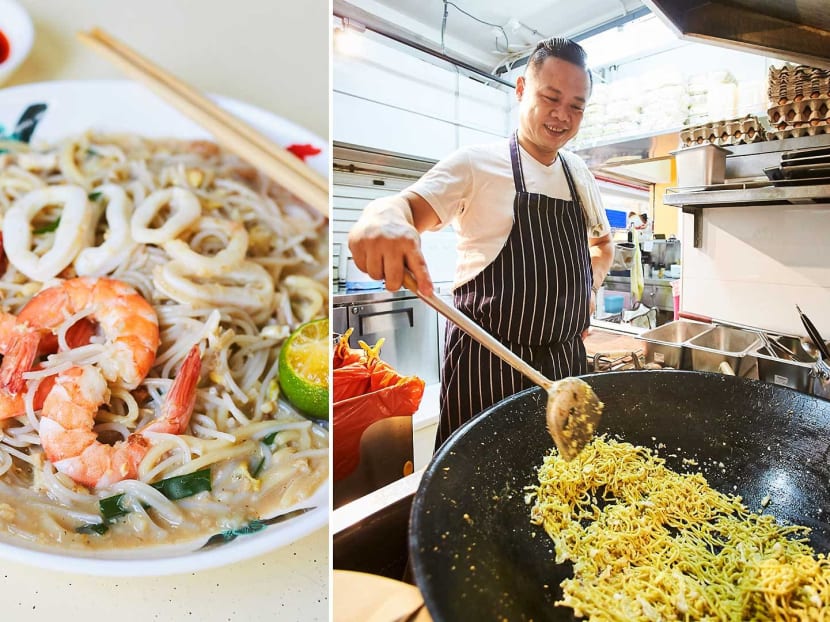Former Les Amis Chef Now Sells Hokkien Mee At Kopitiam Stall With 45-Min Queue
“My stall looks like a polyclinic with the queue number board.”
Xavier Neo has lost 5kg in one week. Ever since the 43-year-old started his own Singaporean-style Hokkien mee hawker stall called Hokkien Man Hokkien Mee a fortnight ago, he has been working 14-hour days.
Every morning, he wakes up at 5am and makes his way to his stall at a kopitiam in Toa Payoh Lor 7, where he prepares prawn stock that takes three hours to cook. He ends work at “around 7pm” after washing up at the end of a long, tedious day.
It’s a very different scene from Xavier’s previous job. For over a decade, the professional chef used to work at fine-dining restaurants (“I didn’t go to culinary school; I started from the lowest position as an apprentice and worked my way up”) — his last job was a sous chef at two Michelin-starred French restaurant Les Amis where he worked for over five years, and mod European restaurants Novus (now defunct) and The White Rabbit.
“The kitchen was air-conditioned back then, but my stall is hotter and more cramped,” he says. “The biggest difference [between being a hawker and chef] is that I used to work eight to 10 hours a day as a chef, but now I work 14 hours. We’re running our own business, so we do everything ourselves.”
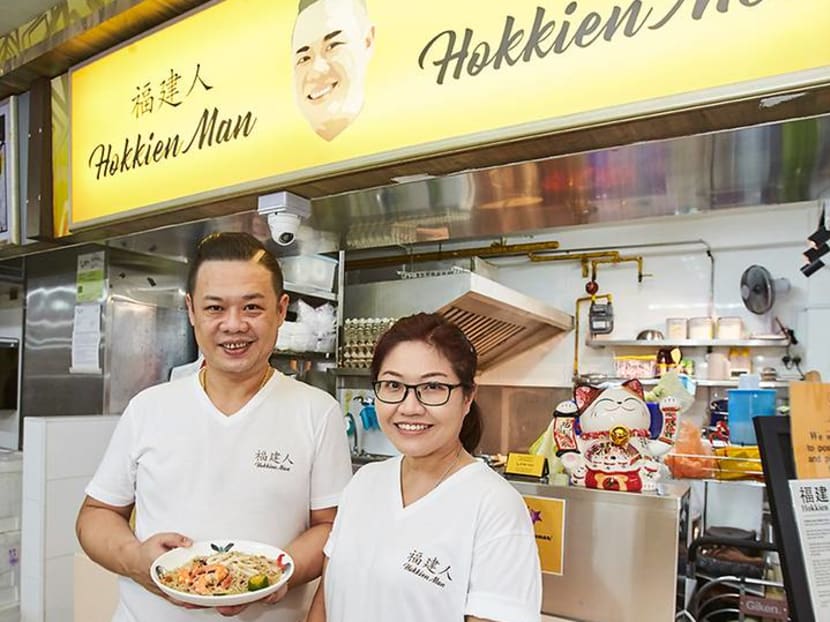
The ‘we’ refers to Xavier’s wife, Alice Lai, 46, who left her full-time job as “an administrator in the education industry” to help her husband at their stall. Coincidentally, Alice had once been a hawker in the mid-Noughties. “I ran a nasi lemak stall with my aunt at Holland Drive,” she shares. They shuttered the stall when her aunt decided to retire.
But Alice puts her F&B experience to use here. “The chilli here is actually the same chilli I used to make at my nasi lemak stall. I just tweaked the recipe a little and added less belacan so that it’s not too overpowering for Hokkien mee,” she tells us.
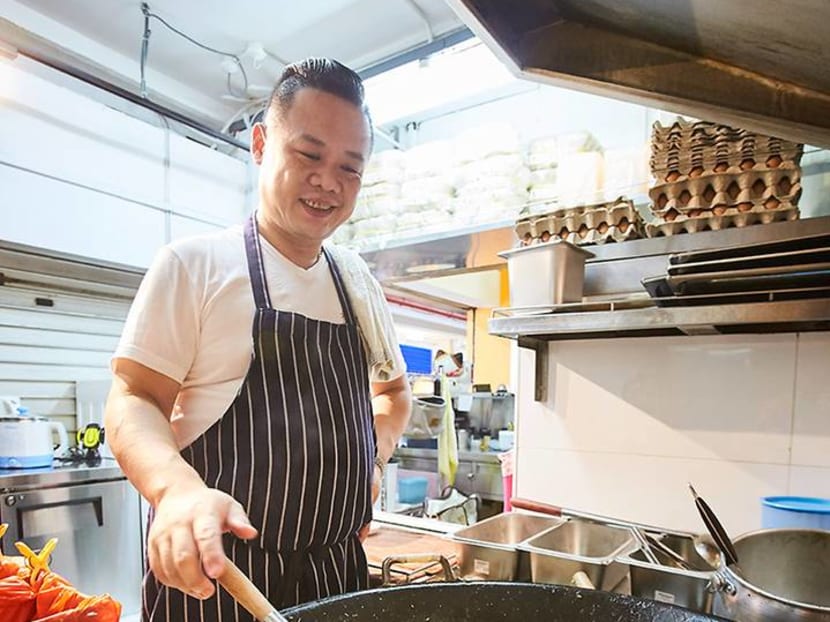
Despite the long hours and tough working environment, Xavier became a hawker as he “wanted to preserve hawker culture”. He reasons, “Nowadays there are fewer and fewer hawkers. After the old hawkers retire, there won’t be anyone [to carry on the tradition] anymore. The job is not easy, it’s very tiring. I do miss being a fine-dining chef, but the people around here like my Hokkien mee, so I don’t feel so tired (laughs). My aim is to open more Hokkien Man Hokkien Mee outlets eventually.”
Despite being in business for only two weeks, his Hokkien mee is very popular (we’ll get to that later). While he says he didn’t have to take a huge pay cut to become a hawker, Xavier reckons he “sacrificed time” for his new career. Alice points out: “Last time he can stay up till midnight watching YouTube videos, now he’s snoring by 8.30pm. We used to have heavy dinners; now we just tapow some herbal soup home to eat and go to sleep.”
When we ask Xavier why, of all dishes, he decided to offer Hokkien mee, he explains that when he was working as a fine-dining chef, he often whipped up HKM for his colleagues’ staff lunch. “I also cook it at home on weekends for my relatives,” he says. Alice teases: “He’s a typical Hokkien man, he likes to cook Hokkien mee.”
The couple also saw a market gap for the beloved dish in their stall’s Toa Payoh neighbourhood. “There aren’t many Hokkien mee stalls in this area, so we don’t have much competition. A lot of old folks live around here, and they prefer to eat traditional dishes like our Hokkien mee. We cook our noodles with a mix of pork lard and vegetable oil instead of the traditional 100% pork lard so that it’s less oily for the modern palate, but some of our elderly customers actually asked for more pork lard,” laughs Xavier.
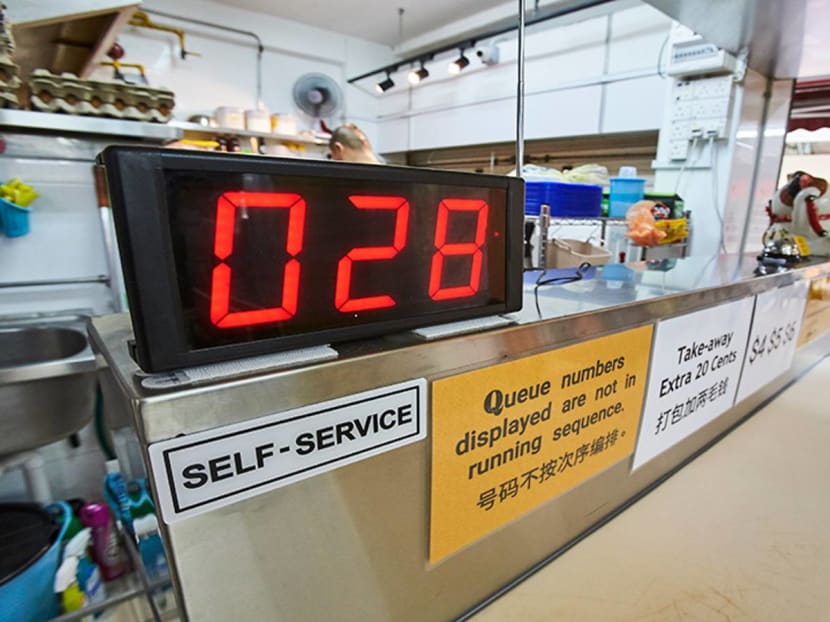
Xavier’s stall only offers one dish, Hokkien Mee ($4/$5/$6). But it’s such a hit, there’s currently a 30 to 45-min wait at lunchtime. “Our wok can only cook nine to 10 plates each time, so there’s a backlog when there are a lot of customers,” says Alice.
The stall opens at 10am daily except Mondays, and closes by 2.30pm when their stock runs out. “Come early,” Alice advises. The couple sells “about 200 plates” of Hokkien mee daily in the few hours that their stall is open. To manage the crowd, they installed an electronic number board system like the kind bubble tea shops use.
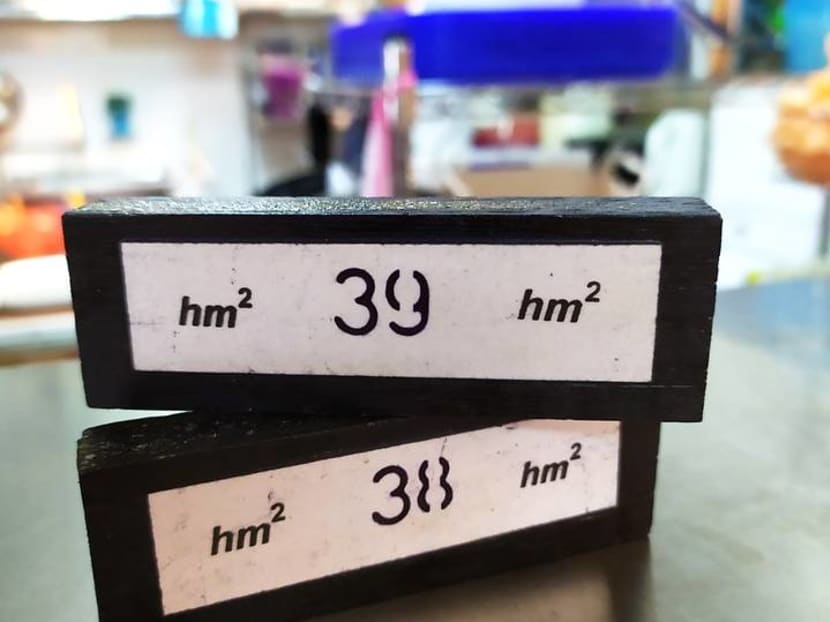
Customers are given a handmade wooden number tag upon order. When their Hokkien mee is ready, their number is flashed with a ‘ding’ on the electronic board. “People said my stall looks like a polyclinic with the ‘ding ding ding’ number board,” Alice jokes.
If you don’t want to wait, here’s a hack: call the stall to order your Hokkien mee in advance and it’ll be ready for you when you arrive. “You can order for takeaway or dine-in,” chirps Alice.
Hokkien Man’s Hokkien mee is cooked wetter than usual. “So it’s easier for old people to eat,” says Xavier. But you can request for your HKM to be more dry if you prefer so. “We also had old folks who brought an extra egg and asked us to add it to their noodles. And some aunties brought a plate from home and asked us to put the Hokkien mee on it. I wanted to cling wrap it for hygiene but they said no need, they just live upstairs,” Alice laughs. “We’re planning to offer special bulk orders soon, for office lunches, and people can customise their Hokkien mee with lobsters and other types of seafood.”
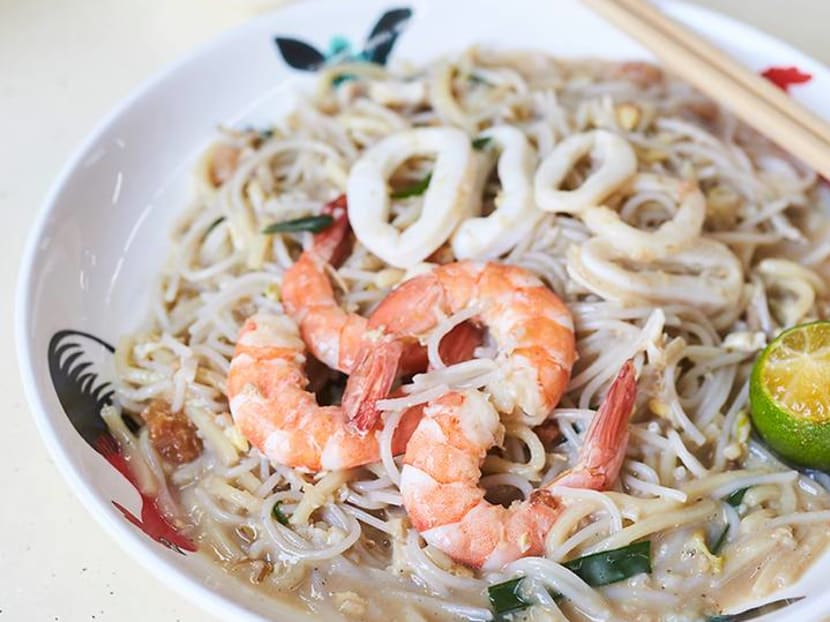
Despite its affordable price, each plate of Hokkien mee is loaded with yellow noodles and thick bee hoon, wild-caught grey prawns, sliced pork belly, beansprouts and chives. “We can’t price our noodles too high ’cos of all the old folks around here. And we didn’t want to compromise on quality, so we have to sell more plates to earn [a profit],” quips Alice.
The Hokkien mee is indeed very tasty; al dente noodles drenched in a thick, umami prawn stock simmered for three hours with garlic-fried prawn heads, pork bones and squid. “I use the same method of cooking lobster bisque to make my prawn stock,” shares Xavier. Add a squeeze of calamansi lime for extra fragrance. The wild-caught prawns are also very fresh, plump and springy (you get two, three or four prawns depending on the size you order).
Our only grouse is that our plate of noodles is a little too wet, even though we usually like our Hokkien mee on the wet side. We’d request for it to be drier next time. We also find Alice’s sambal chilli — which tastes like classic nasi lemak chilli — a tad too sweet for HKM.
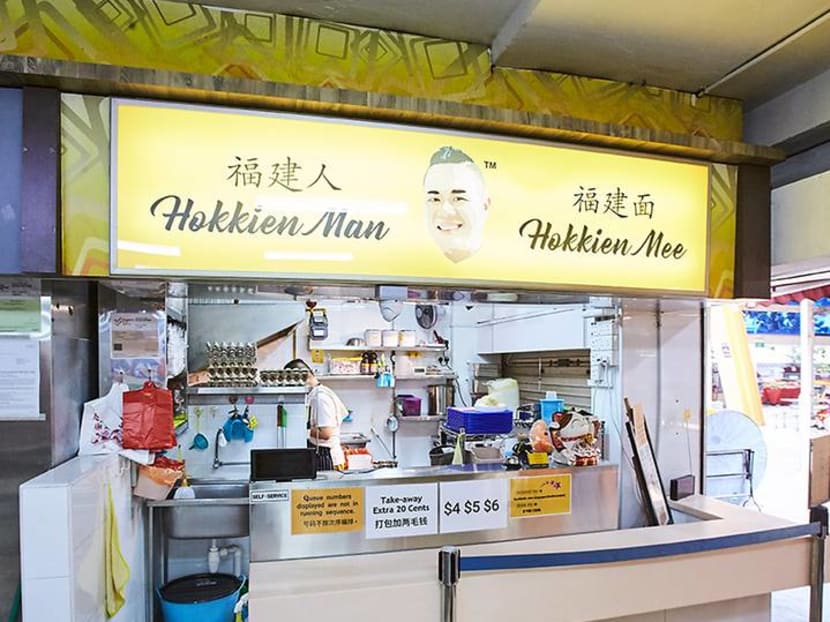
If you like Hokkien mee, Hokkien man Xavier’s version is plenty yummy (go early to avoid disappointment), and, despite its wallet-friendly price, is loaded with premium ingredients like wild-caught prawns instead of the cheaper farmed ones. Xavier says: “I hope I can get a Michelin star one day with our own uniquely Singaporean Hokkien mee.” He has plans to open more outlets under the Hokkien Man Hokkien Mee brand, including a halal version, and hire staff to cook there. But in the meantime, you have to queue up at Toa Payoh for a taste of his noodles, or be smart and call him up in advance to chope your plates.
Hokkien Man Hokkien Mee, 1913 Coffeeshop, Blk 18 Toa Payoh Lor 7, S310018. Tel: 8798-1525. Open daily except Mon, 10am-2.30pm or while stocks last. www.facebook.com/pg/Singaporehokkienman.
PHOTOS: MARK LEE/ ALICE LAI

